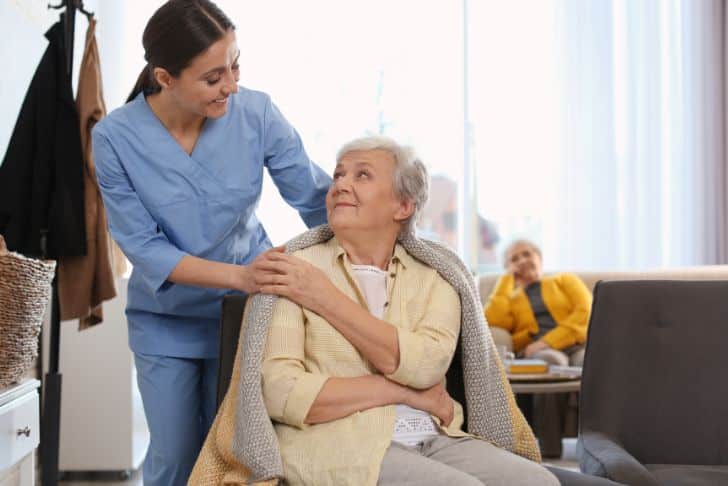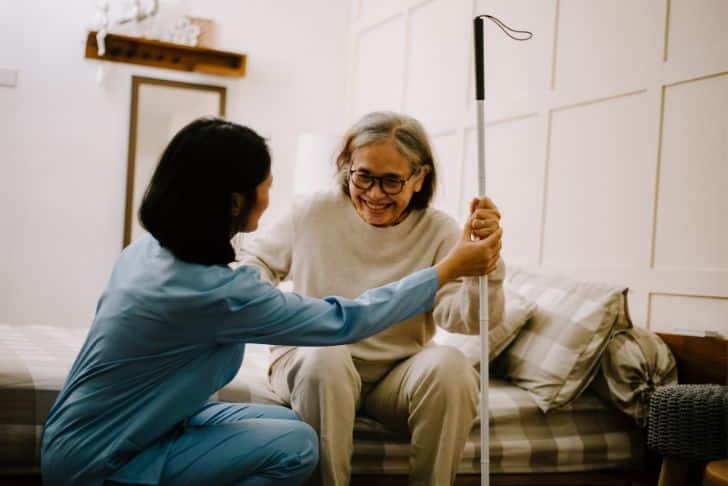Do you know how critical fall prevention is for an elderly person? Understanding and addressing this issue could significantly improve their quality of life, well-being and independence. Since physical changes, health conditions, and specific medications increase the risk of falling as one gets older, it is vital to know about necessary precautions and preventive measures.
In this article, we’ll guide you through detailed strategies that can drastically reduce the risk of falls among elderly individuals. So stay with us as we share some important tips and insights on fall prevention.

The Risk of Falling in the Elderly
Falling can lead to severe injuries, damage the quality of life, shake the confidence, and hinder independence. Understanding and knowing how to reduce this risk is the first step in achieving a healthier and more independent lifestyle in old age.
The Effects of Physical Changes and Health Conditions
As people age, physical changes often occur. Muscles lose their strength and flexibility, reflexes slow down, and balance becomes more unstable. These changes, coupled with illnesses like heart disease, arthritis, and dementia, significantly increase the risk of falling in the elderly.
The Impact of Medications on Fall Risk
Certain medications can also increase the risk of falls. These include sedatives, tranquilizers, and some types of antidepressants. Many of these medicines can cause dizziness, slow reflexes or lower blood pressure which all might lead to a fall. It’s always crucial to discuss these side effects with your healthcare provider.
Six Strategies for Preventing Falls
Now that we’ve examined some of the key reasons why falls may occur let’s shift our focus on several practices to prevent them. These methods include medical appointments, physical activity, careful selection of footwear, reduction of home hazards, improved lighting, and using assistive devices.
Schedule Regular Appointments with your Healthcare Provider
Regular checkups with healthcare providers are indispensable to fall prevention. Here, any medications, previous falls, and current health conditions can be discussed. The provider will assess the risk and guide you through appropriate preventive strategies.
Stay Active
Physical activities like walking, water workouts, or tai chi have proven effective in fall prevention. They improve strength, balance, coordination, and flexibility. However, always consult your healthcare provider before starting a new fitness program.
Wear Sensible Shoes
High heels, floppy slippers and shoes with slick soles are a recipe for disaster. These can easily cause slipping and subsequent falls. It is advisable to wear properly fitting, sturdy shoes with flat, nonskid soles.
Remove Home Hazards
Home should be the safest place for everyone, and this entails removing potential fall hazards. This includes boxes, papers, and electrical cords lying on walkways, as well as loose rugs. Areas around the home should also be well lit to prevent tripping in poorly lit spaces.
Light Up Your Living Spaces
Good lighting is crucial, especially in places like staircases and narrow hallways. Motion-activated lights, nightlights or even a simple flashlight can effectively prevent falls due to poor visibility.
Use Assistive Devices
Certain types of equipment can significantly help in fall prevention. These might include a cane or walker for better balance, handrails on both sides of a stairway, nonslip treads for bare-wood steps, a raised toilet seat or grab bars for the shower or tub.

The Role of Fall Prevention in Maintaining Independence
Prevention is always better than cure, and this is especially true when dealing with falls in the elderly. By reducing the risk of falls, the elderly can maintain their independence and enjoy a better quality of life.
Fall prevention is much more than just avoiding injuries. It is about maintaining independence and the ability to perform daily activities without fear. With the right strategies in place, elderly individuals can continue living in their own homes, participating in activities they love, and enjoying the freedom that comes with being self-reliant.
Coming to the end of our discussion, the importance of fall prevention in the elderly cannot be overstated. Addressing this issue requires a clear understanding of its various aspects and the effective use of recommended strategies. By following the advice outlined in this article, you can potentially reduce the risk of falls among the elderly, ensuring better health and sustained independence throughout their golden years.

